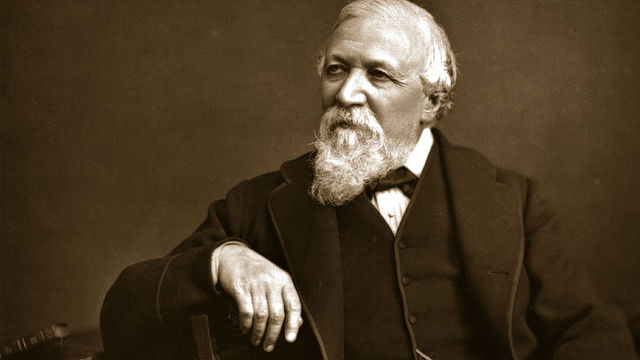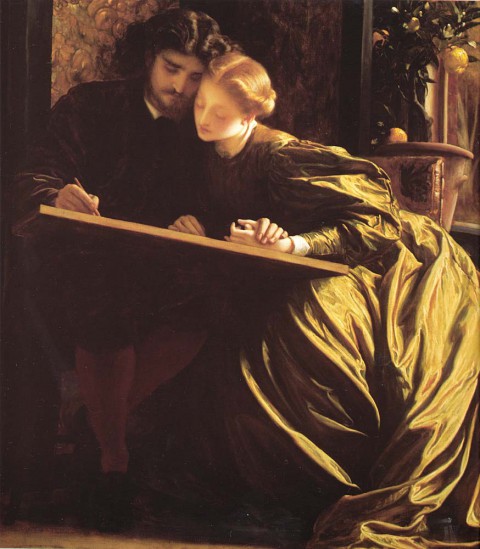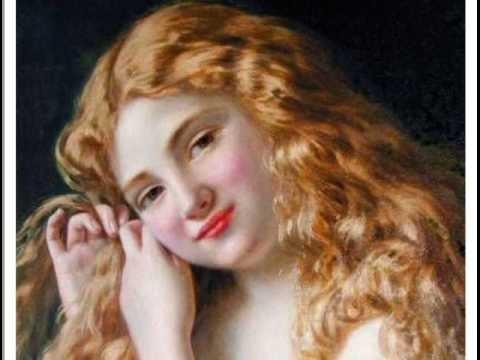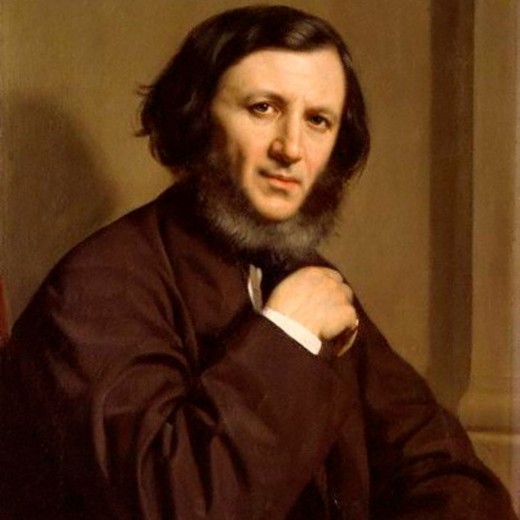Robert Browning was born in the year 1812 in Walworth in England. Browning wrote his first piece of poetry at the age of 12. His first major publication was in the year 1833. After numerous failures, he finally became successful and came to be known as one of the foremost Victorian poets, due to his mastery of the dramatic monologue. His most notable works include ‘Men and Women’, ‘The Ring and the Book’ and ‘Dramatic Romances and Lyrics’ among many others. A poet and a playwright, Browning died in the year 1889 of natural causes.
About Home, Thoughts from Abroad: The poem was written in 1845. At the time of its writing, the poet was in northern part of Italy. It was first published in ‘Dramatic romances and Lyrics’.
Setting of the poem: The setting of the poem is in some foreign place. Though most of the poem speaks of England and places in it and then later shifts to some country side full of fields, the primary setting of the poem is some place outside of England. This is evident from the title and from the lines of verse used in the poem. The foreign place is the poet is in at the time of its writing is Italy.
Poetic Devices in Home
Imagery: The speaker of the poem uses vivid imagery to describe certain trees in England. In stanza one, he describes the elm-tree and in stanza two, he describes the pear-tree. The description is so vivid in the second paragraph that it is almost dreamy.
Rhyme: The rhyme scheme of the poem is irregular; so is the stanza part. There are two stanzas, different in length, the first one with 8 lines and the second with 12 lines. The rhyme scheme of the first stanza is ABABCCDD. The rhyme scheme of the second stanza is EEFGFGHHIIJJ. As it is seen, it is without a pattern.
Metaphor: There is a small metaphor in the last second line of the second stanza when the speaker says that the fields and the buttercups are dowries to children. Now, dowry obviously cannot be given to children; equating the meaning to imply that the fields and buttercups provide children happiness.
Alliteration: There is some alliteration seen in the poem; in line 5 of stanza 1, ‘boughs and the brushwood’.
Summary of Home, Thoughts from Abroad
The speaker speaks of his home-country England fondly and says how lovely it would be to live there.He begins by saying that it was April now in England. It was the time when elm trees bear leaves and chaffinch, the second commonest breeding bird in Europe, sings.
And when May comes one can see the whitethroats, a common warbler in Europe, and the swallows. He says one can also see the blossomed pear-tree and he goes on to describe the tree in some length. He next speaks of the thrush’s songs. Then he speaks of all the beautiful fields and flowers.
He ends the poem by saying that England, his home was far brighter than the gaudy melon-flower he was in front of now.
Analysis of Home, Thoughts from Abroad
We get to know things immediately from the first two lines of the poem. One that it is April in England at the time the speaker speaks and two that the speaker himself is not in England. It can be deduced from the use of the word ‘there’ implying the speaker was somewhere else at the time of writing.
The goes on to describe England in April from the view of a person who is living there. He uses imagery to describe the way the branches and trunk of the elm tree bear leaves. We can see the great tree now, brown one day, dotted with green the other. The speaker says the people in England are unaware of this. It goes to imply that when at home, the most common things like the sprouting of leaves, goes unnoticed. But when far away and home is just in one’s thoughts, even the tiniest things are magnified. Then the speaker thinks of the chaffinch, a small bird, singing on the branch of an orchard. There is a dash before the ‘now!’, emphasizing that this was all happening in England now, but he is so far away from all this. The memories consume him.
The speaker then skips to the next month, May. He speaks of the whitethroat building. Whitethroat is again a common bird in Europe. It builds its nest usually during the month of May. It is to this process of building the speaker refers too. He also speaks of all the swallows that come out during this time. Hark, the speaker says, calling attention to the pear-tree.
He uses imagery again to describe this pear-tree. It is very vivid. We see in front of our eyes, a wide field and in that field’s hedge, a pear-tree. It has just blossomed and it leans towards the fields and making the pears and dewdrops fall down there. The dew drop falls from the edge of the bent leave, giving us a dreamy picture of beautiful nature.
He then speaks of the thrush, another bird, and speaks of how it sings every song twice. This is to show that it could sing the song it sung the first time; the one which gave intense pleasure to the listener. It is to show that what it sung wasn’t random.
The focus then shifts to the fields. The fields are covered with dew in the morning but as the noon sun comes up, the dew vanishes and the grayish white color of the field changes to a lush green. The noon sun gives life to the fields and the buttercups, which are a kind of flower. The speaker says that these two are the ‘dower’ of little children. ‘Dower’ stands for dowry and it is a present given to the groom from the bride’s side as a means to achieve happiness. The speaker says that that lush green fields and the bright yellow buttercups in the mellow noon sun gives the children much happiness. This is a metaphor.
The speaker ends the poem by saying that the buttercups the children see are much brighter than the gaudy melon-flower the speaker is seeing right now. The speaker is reminiscing his times in England, his home while he is in some foreign place.
Central Idea of the poem: The central idea of the poem is to show the poet’s love for his home, England. It is to show the small great things that exist in his home.
Tone of the poem Home, Thoughts from Abroad: The poem is full of wonder and admiration and longing. The speaker of the poem wonders on the little things that happen in England and how they give it a certain uniqueness, which is often missed by the people living there. He admires the trees, the birds, and the fields; all beautiful and providing happiness. Finally, we know he longs for his home, by his use of dashes before certain words and sentences like ‘- now’ and the last line of the poem.
Conclusion: The poet Robert Browning captures his love for his home, England in a beautiful manner through this poem. Though he is far away in a foreign place, he is often reminded of home by the smallest of things (for example the melon-flower). The result of that nostalgia and memories is this poem.
Some online learning platforms provide certifications, while others are designed to simply grow your skills in your personal and professional life. Including Masterclass and Coursera, here are our recommendations for the best online learning platforms you can sign up for today.
The 7 Best Online Learning Platforms of 2022
- Best Overall: Coursera
- Best for Niche Topics: Udemy
- Best for Creative Fields: Skillshare
- Best for Celebrity Lessons: MasterClass
- Best for STEM: EdX
- Best for Career Building: Udacity
- Best for Data Learning: Pluralsight
















